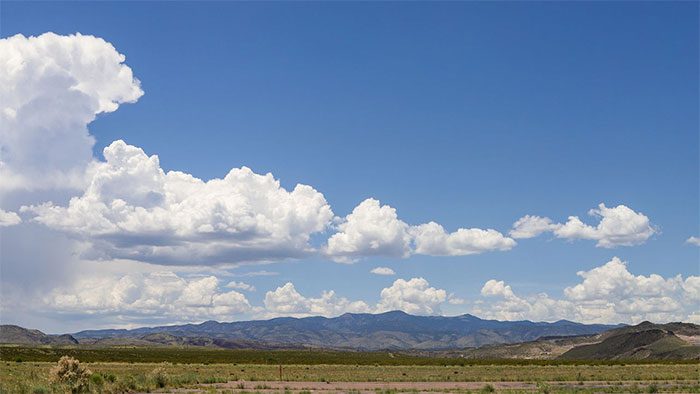Injecting Diamond Particles into the Atmosphere: A Geoengineering Approach to Cool the Earth
However, this proposal and geoengineering models, in general, face significant controversy regarding their practicality and effectiveness.
Cooling the Earth

Injecting aerosol into the stratosphere.
In October, a team of Swiss scientists proposed injecting 5 million tons of diamond particles into the atmosphere each year to reduce the Earth’s temperature by 1.6 degrees Celsius. This reduction is sufficient to halt global warming. The study was published in the scientific journal Geophysical Research Letters and sparked significant debate within the scientific community.
Inspired by volcanic eruptions, this initiative is based on the geoengineering model of injecting aerosol (a mist-like gas) into the stratosphere. Aerosols can directly reflect sunlight, increase cloud thickness, and reflect light from them. This could help cool the atmosphere.
Historically, eruptions have released millions of tons of sulfur dioxide into the stratosphere. This gas combines with water vapor and air to form aerosols, helping to “cool” the Earth. For instance, the eruption of Mount Pinatubo in the Philippines contributed to reducing the planet’s temperature by 0.5 degrees Celsius for several years.
However, artificially injecting sulfur into the atmosphere poses many risks. Sulfur particles can contain sulfuric acid, leading to acid rain on Earth. They may also deplete the ozone layer and cause widespread heatwaves that alter normal weather and climate patterns.
With this principle in mind, scientist Sandro Vattioni, working at the Institute of Atmospheric and Climate Science at the Swiss Federal Institute of Technology (ETH Zurich), along with colleagues, has been exploring options for injecting aerosol particles into the atmosphere. They developed a 3D climate model to study how aerosol particles like sulfur dioxide, diamonds, aluminum, and calcite absorb or reflect heat in the atmosphere.
The results indicate that diamond particles reflect radiation the best and remain suspended in the air without clumping. Diamonds also do not produce acid rain like sulfur does.
To achieve a 1.6-degree Celsius reduction, Sandro noted that 5 million tons of diamond particles need to be injected into the atmosphere annually. This substantial amount of diamonds would require the world to ramp up synthetic diamond production, and aircraft would distribute the crushed gemstones throughout the stratosphere.
Sulfur is the second most effective aerosol because it can absorb light at certain wavelengths and retain heat. However, it disrupts surface climate patterns on Earth, such as El Niño. Previous studies have underestimated these side effects of sulfur.

Diamond dust could cool the Earth.
Alternative Solutions
However, diamond dust is not the most ideal solution. Douglas MacMartin, an engineering science researcher at Cornell University, USA, emphasized that the costs would be astronomical.
Currently, one ton of diamonds costs $500,000. Synthetic diamond dust would be 2,400 times more expensive than sulfur and would cost approximately $175 trillion if implemented from 2035 to 2100. Thus, it is estimated that the world would spend nearly $200 trillion in this century.
In contrast, sulfur is readily available with abundant resources and is relatively inexpensive, making its cost almost “zero.” Being in gas form, sulfur dioxide can be injected into the atmosphere in large quantities and dispersed quickly. Meanwhile, solid particles like diamonds would require multiple air transportations to prevent clumping.
“I think exploring other materials is interesting, but if you ask me which option to implement today, it would be sulfur,” Douglas McMartin stated.
The geoengineering model is currently the most discussed method for cooling the Earth. Researchers at the Massachusetts Institute of Technology have previously proposed “fertilizing” the oceans to cool the Earth. Phytoplankton in the sea, such as microalgae, are foundational in the ocean food chain.
During photosynthesis, they absorb CO2 from the air and convert it into carbohydrates and oxygen. Many species of phytoplankton can also release dimenthyl sulfide (DMS) into the atmosphere, forming a type of aerosol.
This process contributes to cooling the air. Understanding this mechanism, scientists plan to spread large amounts of iron sulfate and micronutrients to stimulate phytoplankton growth.
The United Nations has proposed launching giant mirrors into space to reflect sunlight and mitigate the impacts of global warming. However, this solution only addresses one aspect of climate change, specifically warming due to solar radiation. Other greenhouse gas impacts, such as ocean acidification, remain unresolved.
Moreover, deploying giant mirrors in space could significantly affect the Earth’s climate system. For example, the mirrors could alter cloud formation, precipitation, and wind patterns, impacting regional or global weather and climate.
Another option is to disperse iron powder into the Pacific Ocean. This is intended to stimulate the growth of phytoplankton, which consumes CO2 and retains the gas in the water. Removing CO2 from the environment would contribute to reducing greenhouse gases released into the atmosphere and mitigate climate change. However, iron could deplete nutrients for marine organisms, affecting the ocean’s food web.
Given that all the above strategies have both advantages and disadvantages, many scientists remain opposed to geoengineering models due to concerns about unforeseen consequences when deploying such methods on a large scale. It may even consume more resources that should be allocated for reducing carbon emissions and addressing climate impacts.



















































